A store in Peekskill, New York, has an interesting encryption machine on sale. Can my readers help to find information about the background of this device?
As frequent readers of this blog know, Google is one of my main sources of information. When last Wednesday I was googling for vintage cipher technology, I ran across a web page that displays a very unusual encryption machine.
This website is operated by a vintage electrics store named Radio Guy Gallery in Peekskill, NY. The town Peekskill immediately sounded familiar to me. Peekskill is located close to the home place of my friend Richard SantaColoma. When I visited him last year, I took the train from New York City to Peekskill station, where Richard picked me up. Peekskill is situated about an hour north of Manhattan on the Hudson River.
I immediately informed Richard about the machine I had discovered. Even on the same day he drove to the nearby Radio Guy Gallery. He talked to Dan Erenberg, the son of the owner, who said that this machine is for sale at a price of $800. According to Dan, as good as nothing is known about the origin of this device. It might have been made before 1920, which is very rare. Machine-based encryption became popular only after 1925 with designs like the Enigma.
How it works
Richard sent me the following description of the machine:
- Only the center wheel, with the handle, rotates. It is not connected to anything else, that is. It does not advance the paper, or advance the cipher.
- The moving wheel has cast type on the bottom of it. One letter for each wheel letter, and the type letter is the SAME as the marked letter. Therefore, whatever letter is shown, at the top, is the letter that will be printed.
- When the button is depressed, a small leather pad pushes the paper of the strip into the type letter.
- Between the paper and the type letter is a small strip of “carbon paper”. This does not advance, and would quickly be used up to type a letter or two, and need to be replaced. The carbon paper piece is held under a spring loaded clip, for easy replacement.
- The paper strip is moved manually, with a crank. A ratchet measures and stops the movement, one character distance at a time (to properly space the characters on the strip).
- The outer letter/number wheel is fixed, it does not rotate.
It is clear that this is a very simple machine. It does not advance the cipher characters, so any enciphering/deciphering must be done with keys or tables or whatever, and manually input into the machine by setting some chosen character or characters on the inner wheel, to the outer wheel. The operator would therefore have to reset the wheel for each plaintext character.
Also, the need to replace the carbon paper after each few characters implies that this was not intended for real service as a cipher machine, but for demonstrating one – either to test or demonstrate the concept, for future production, as a prototype; or as a patent model, to show the cipher mechanism, but not needing to create other aspects such as advancing a strip of carbon paper, or advancing the paper strip. These would be desired on a working unit, but unessessary on a patent model if they were not part of the patent.
The lettering of the outer wheel is quite unusual.
How it is constructed
According to Richard, the machine is constrccuted as follows:
- The wooden parts of the machine have pencil measurement marks on them, showing they were not cut in a jig, but measured and cut.
- The numbers and letters on the cipher wheels are stamped, not engraved or cut. This can be seen because of the raised metal around the edges of the characters.
- The characters are not very accurately placed, implying this is a one off machine. Any production machine would probably be engraved, and marked in a jig, for accuracy.
- The letter types under the cipher wheel seem to be lead, and possibly cut from typewriter arms. They are screwed to the moving cipher disk, and the top of the holes used can be seen ont coming through the top of that disk. The length of the attaching screws varies (depth in the holes), further implying the one off, hand built, nature of this.
- The copper and aluminum supports are rudely cut and bent, with little attempt to clean or polish out the tool marks.
- There are no numbers, letters, or maker’s marks anywhere on the machine that I could see.
From the contruction, this looks like a one off. According to Richard, some of the parts do not look as old as the design implies. He is not so certain this is from the 1920’s or before, but rather may be someone’s attempt at building a replica of an old machine. He also notes that the base was cut on a table saw, with a rotating blade… and this blade was either dull, or the wood was pushed through too rapidly. This implies a somewhat amateur ability here… and patent models usually show a high degree of model making skill. Ditto on the poor alignment of the stamped letters, the bending marks on the copper supports, and the somewhat crude cutting and filing of some parts.
Does a reader know more?
So if a patent model, this machine was probably built by an amateur. Richard tried and could not find the patent for this. He searched from 1900 to 1936.
Can a reader say more about this device?
I want to thank Richard SantaColoma very much for his support. Only a few hours after I had informed him, he sent me his report including the photographs. Rich, I really appreciate your help!
Follow @KlausSchmeh
Further reading: A little known encryption machine that could have changed the course of history
Linkedin: https://www.linkedin.com/groups/13501820
Facebook: https://www.facebook.com/groups/763282653806483/

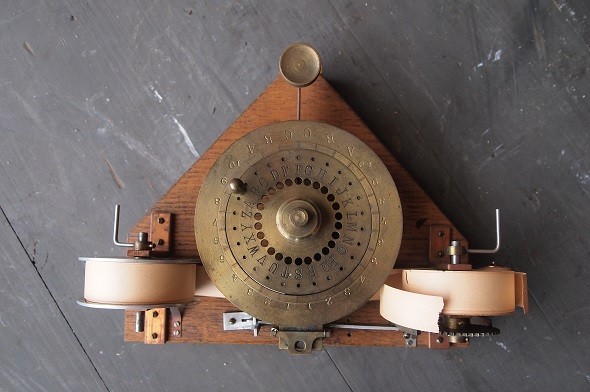
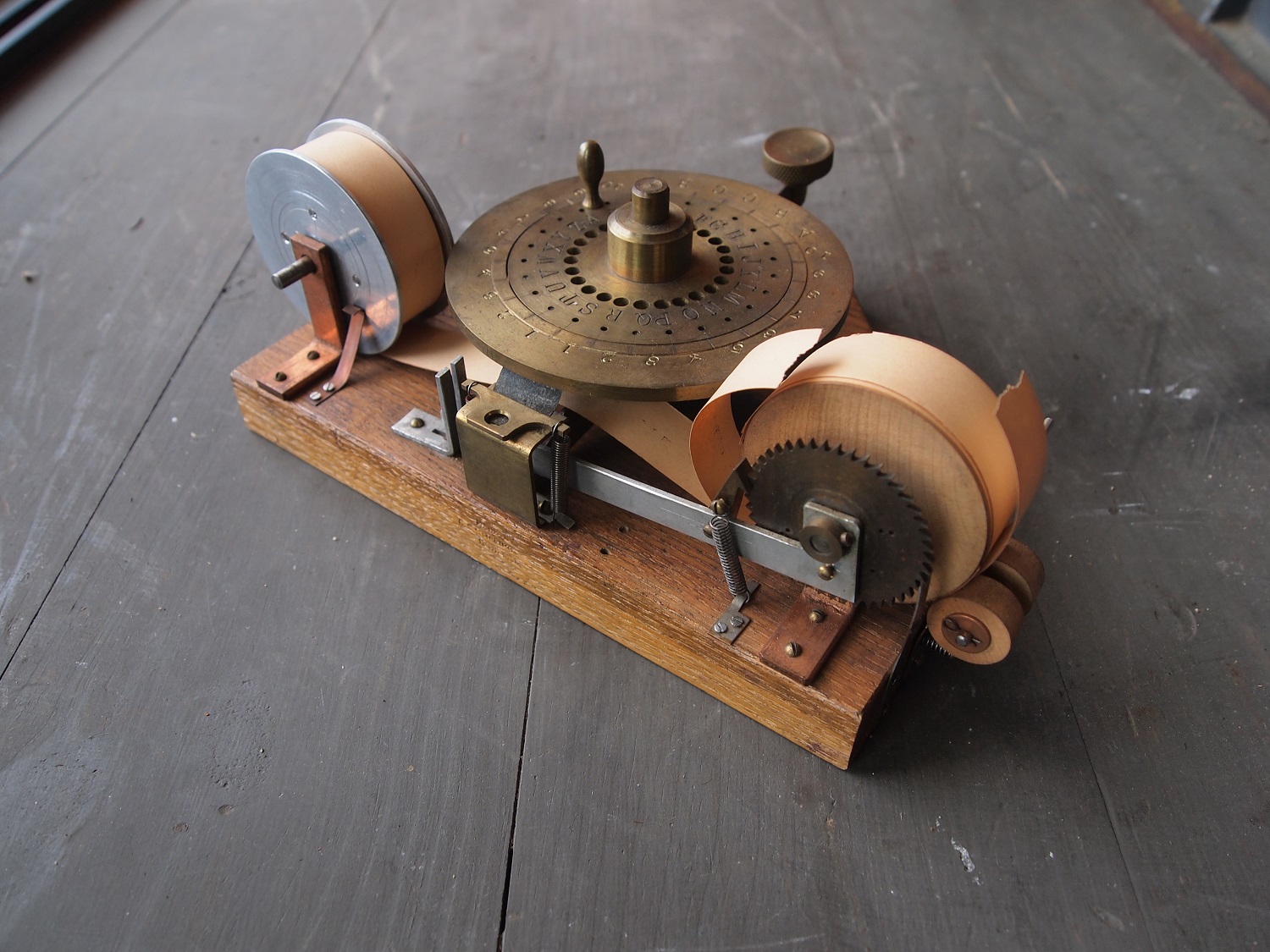
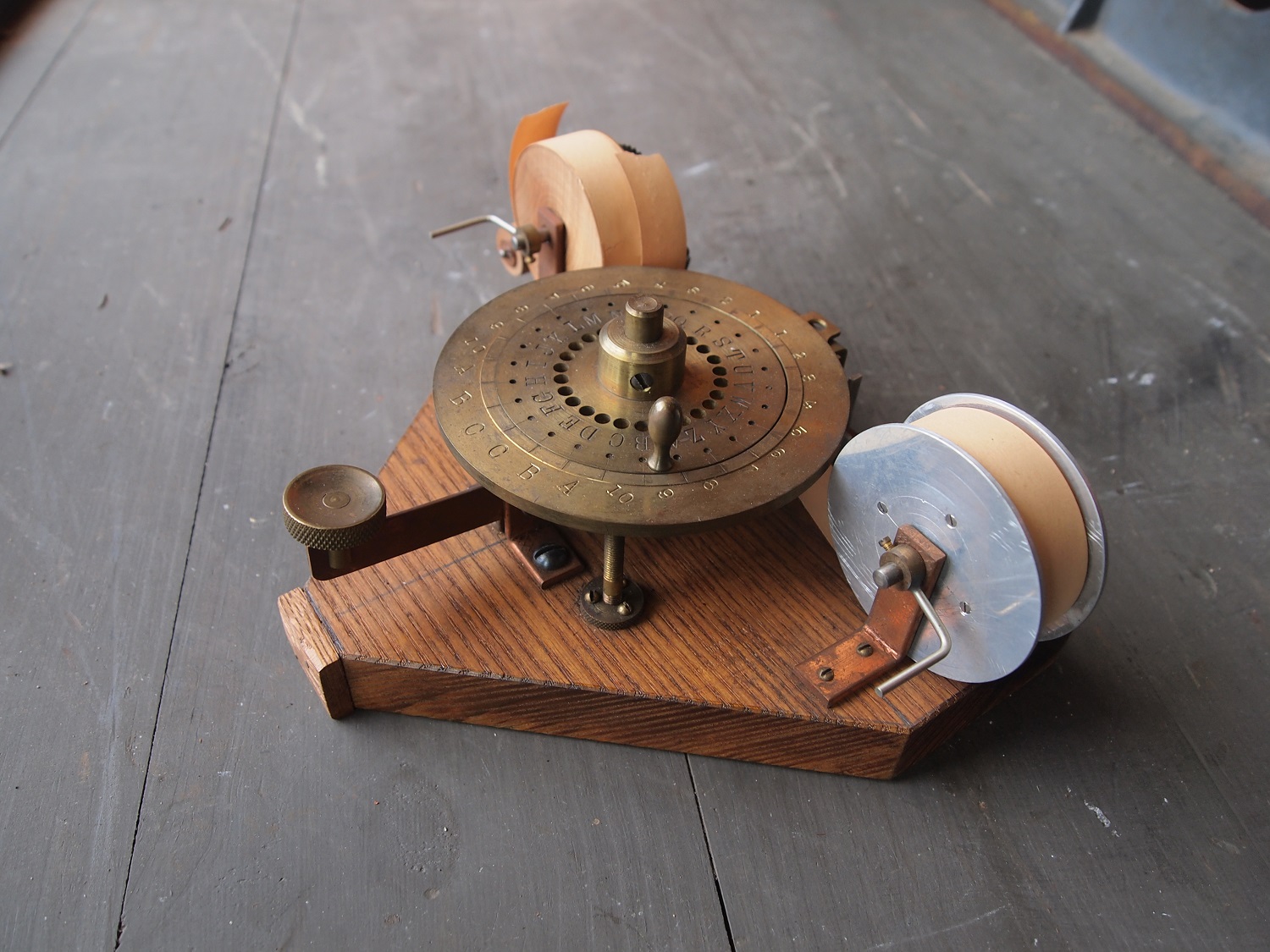
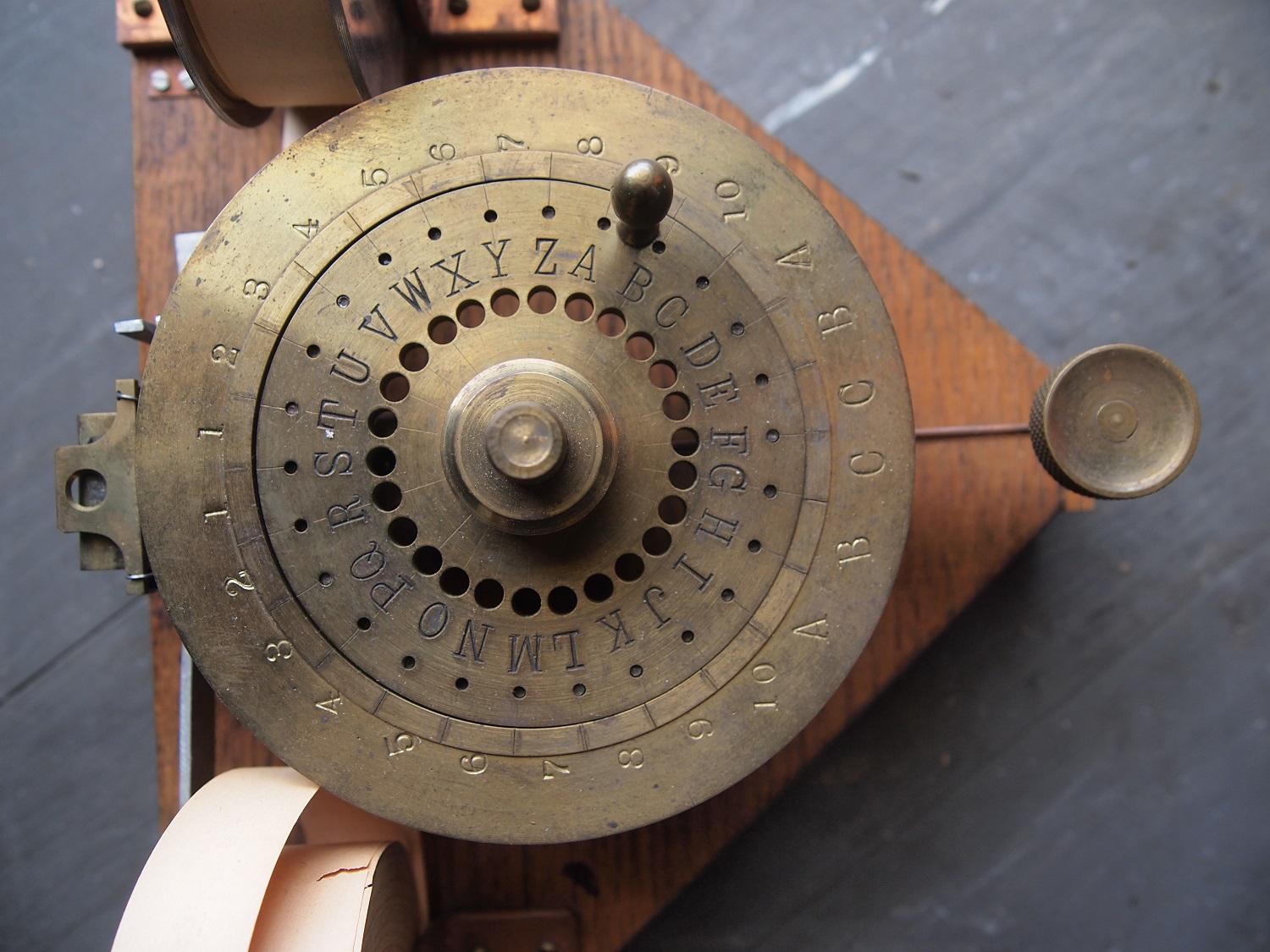
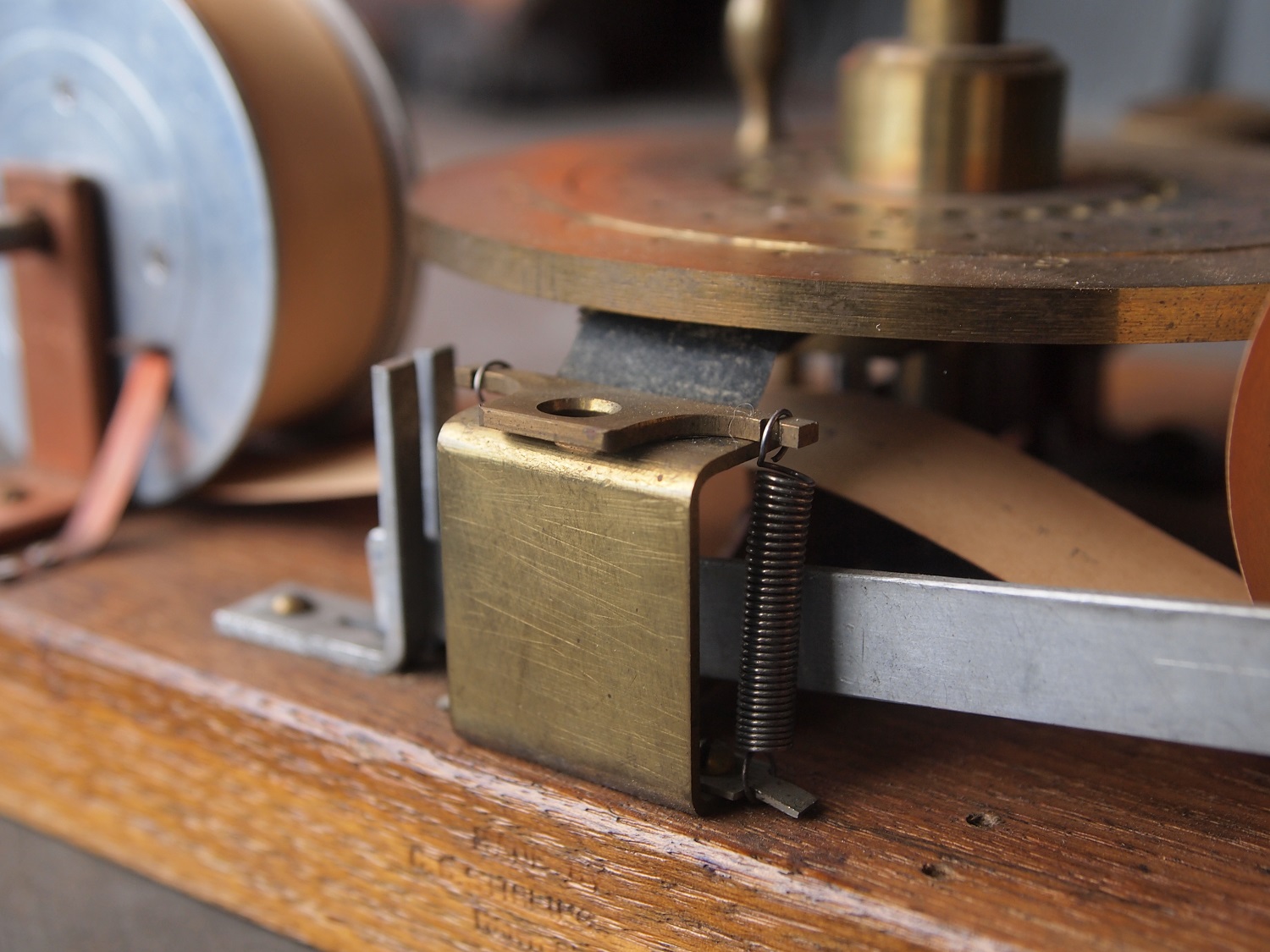

Kommentare (24)